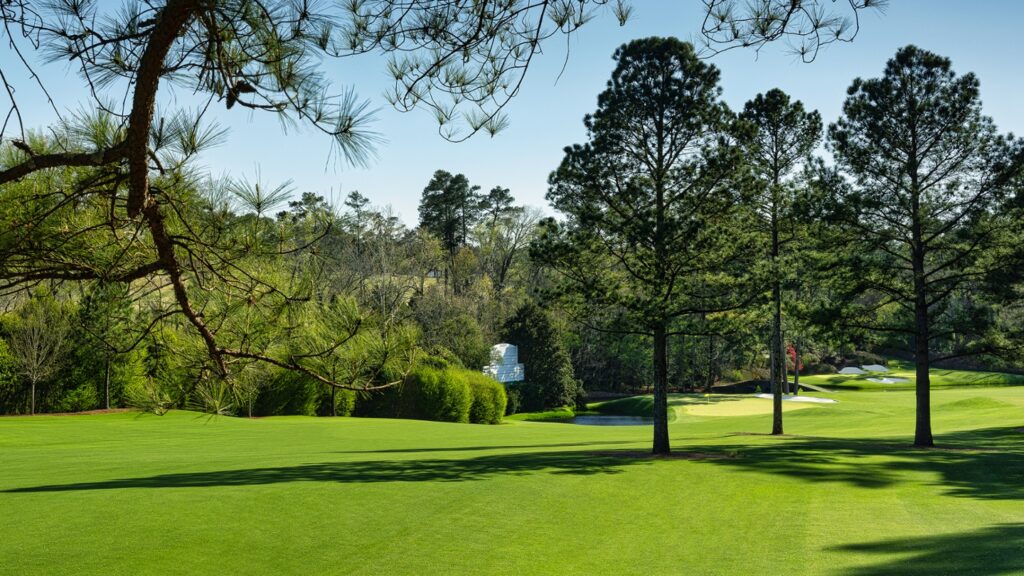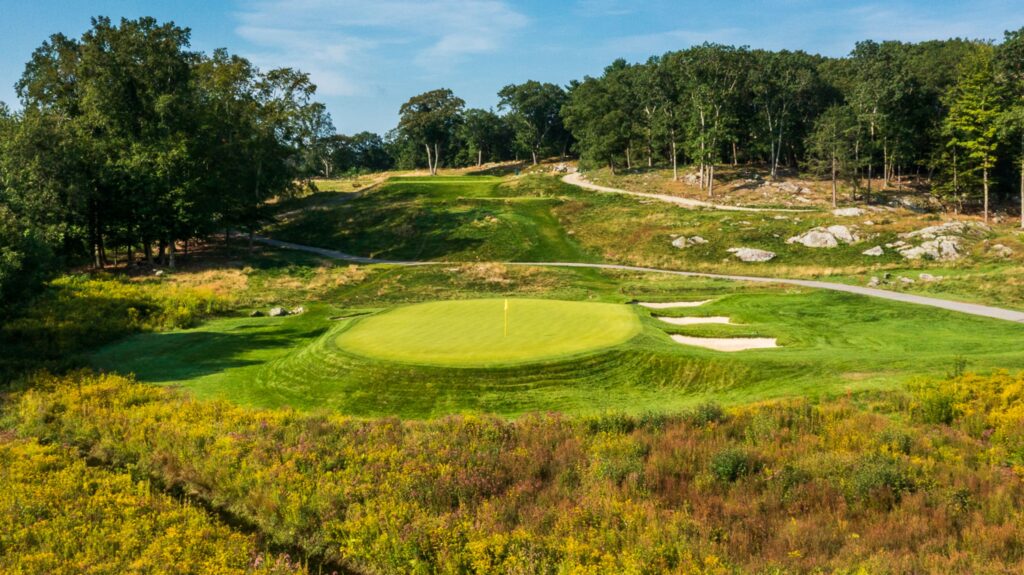A ground-up perspective of the 2022 Majors
The slate of golf courses that will play host to this year’s quartet of men’s major championships is truly one to celebrate. The venues will showcase a tremendous mix of the two most famous courses in golf – Augusta National and St. Andrews, with two recently restored American gems – The Country Club and Southern Hills. We take a deep dive on how each course is remaining relevant as the Professional game continues to push the boundaries of distance.

Augusta National – The Masters
In the run up to the tournament, the 11th and 15th holes (named Dogwood and Firethorn if you’re into that sort of thing) were lengthened by 15 and 20 yards respectively.
For the 11th, this was intended to place players’ tee shots further back so that they have a more challenging second shot with the greenside pond more in play. Equally, players that bail out into the right pine straw are hampered by the left to right dogleg.
For the 15th, when players like Bryson are hitting a nine iron into a par five, it is no wonder that it is the easiest statistical hole (average score of 4.78 strokes is the lowest to par across in Masters tournament play). A longer and therefore more dispersed tee shot brings in the overhanging trees on the left or the rough on the right more in play.
Great examples of how this extra length were showcased in the final round last week. Scheffler’s 239 yard and Smith’s 249 yard approaches were incredibly high tariff shots, struck with a long iron or three wood. When you compare that to Garcia’s victory-securing and pin-hitting mid-iron in 2017, you now have a much sterner hole presented to the players.

Southern Hills – PGA Championship
As the driving gap between amateurs and professionals widens, Gil Hanse’s restoration of Southern Hills attempts to occupy a philosophical middle ground. How can you bring back the iconic features of Perry Maxwell’s 1936 design, whilst at the same time challenge the game’s best under major championship conditions?
Hanse summarises – “It’s all about the greens … What [the Pros] are looking for is a predictable result on every single shot. Well, if a green’s firm, you’re not sure if it’s going to bounce and check, bounce twice and check, not check … You hit it in the rough and you have firm greens, you’re done.”¹
Equally, by reducing the collars of these firm greens back to their Maxwellian design, approaches will run off into collection areas instead of staying put. This infuriates professionals, whilst offering a minimal penalty for the amateur membership.

St. Andrews – The Open Championship
What more is there to say about the golf course that started it all? It is a truly marvellous course that stirs the deepest of emotions in all golfers.
However, could this be the year that the ‘Old Lady’ becomes irrelevant for the modern game? In over a century of hosting The Open, the course has only been lengthened 350 yards.² In 2022 eight out of fourteen par fours will be less than 420 yards (think: driver, flip wedge for most players) and those that will be down-wind could be driveable.
After watching what young Collin did to a benign Royal St. George’s (15-under was a 72 hole Open scoring record), the R&A may be quaking in their boots if the wind doesn’t puff its cheeks once more.

The Country Club – US Open
In a similar fashion to Southern Hills, The Country Club has undergone a restoration project to maintain its proficiency in hosting major championship golf. Gil Hanse again was trusted to walk the politically charged tightrope with the members on one end of his balancing stick with the tournament committee (in this case the USGA) at the other.
The key hole to keep an eye on for this tournament will be the 131 yard par 3 11th.
In the 1963 and 1988 US Opens, players simply walked past this little terror. In the 1913 edition however, this hole was in play. When little known amateur Francis Ouimet would take the two greats of the game Harry Vardon and Ted Ray to an 18 hole playoff, all were tied when they reached the short 11th. Twenty year old Ouimet made a par three, whereas his two legendary playing partners made bogey. This would be a lead he would not relinquish en route to winning, thus encouraging the production of the film “The Greatest Game Ever Played” some ninety two years later